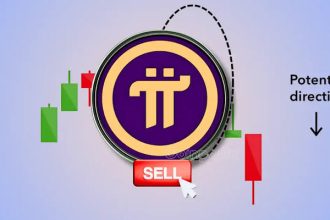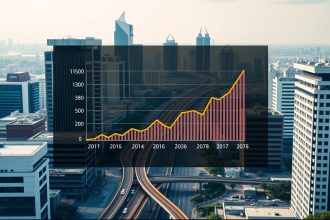In a positive development for policymakers and consumers alike, the latest government data released on Wednesday revealed that consumer inflation in the United States slowed down in June, reaching its lowest rate since early 2021. This news comes as a welcome sign for officials grappling with mounting cost-of-living concerns.
According to the report, the Consumer Price Index (CPI), a key measure of inflation, rose by a modest 0.2% in June. This figure represents a significant decrease compared to the previous month, when the CPI increased by 0.6%. The June rate is the lowest recorded since early last year, indicating a notable cooling in the overall inflationary pressures.
The slowdown in inflation can be attributed to various factors, including stabilizing prices for housing, transportation, and energy. Additionally, supply chain disruptions and other pandemic-related factors that had previously contributed to price hikes seem to have abated to some extent.
While the overall inflation rate has shown signs of easing, some specific sectors continue to experience price increases. Notably, the cost of used cars and trucks remains elevated, although the rate of increase has slowed down compared to previous months. Additionally, the price of some food items and healthcare services has continued to rise, albeit at a more moderate pace.
The report comes as a relief to policymakers who have been striving to strike a balance between stimulating economic growth and managing inflationary pressures. The Federal Reserve, in particular, has been closely monitoring inflation indicators as it determines the future course of its monetary policy. The central bank aims to keep inflation at a steady and sustainable level to promote economic stability and ensure the well-being of American consumers.
Although the June data provides a positive outlook, economists caution that inflation remains a critical factor to monitor in the coming months. Ongoing global supply chain challenges, labor market dynamics, and other unforeseen events could potentially influence inflationary trends.
Nonetheless, the recent figures offer some respite for consumers, who have been grappling with rising prices in recent months. Lower inflation rates generally translate into reduced cost-of-living pressures, allowing individuals and families to manage their budgets more effectively.
As policymakers continue to monitor the economic landscape and evaluate the impact of various factors, the hope is that the current trend of easing inflation will persist, providing a stable foundation for sustained economic growth and improved affordability for consumers across the United States.
In further analysis of the latest government data released on Wednesday, the slowdown in US consumer inflation in June marks a significant milestone in the battle against rising cost-of-living pressures. The encouraging figures provide additional insights into the factors contributing to the overall decline in inflation rates.
Supply chain disruptions, which had hampered various industries and fueled price increases, appear to have subsided to some extent. The gradual restoration of global trade flows and the reopening of manufacturing facilities have eased the strain on supply chains, resulting in more stable prices for certain goods.
While the CPI’s overall increase was relatively modest in June, some sectors continued to face challenges. The cost of used cars and trucks, for example, remained high, albeit with a slower rate of increase compared to previous months. This was attributed to ongoing global semiconductor shortages, which have impacted the production of new vehicles and subsequently increased demand for used ones.
Food prices continued to rise, albeit at a more moderate pace, reflecting ongoing supply chain challenges and weather-related disruptions to agricultural production. Similarly, healthcare services saw gradual price increases, reflecting the continued demand for medical care and rising costs in the healthcare industry.












